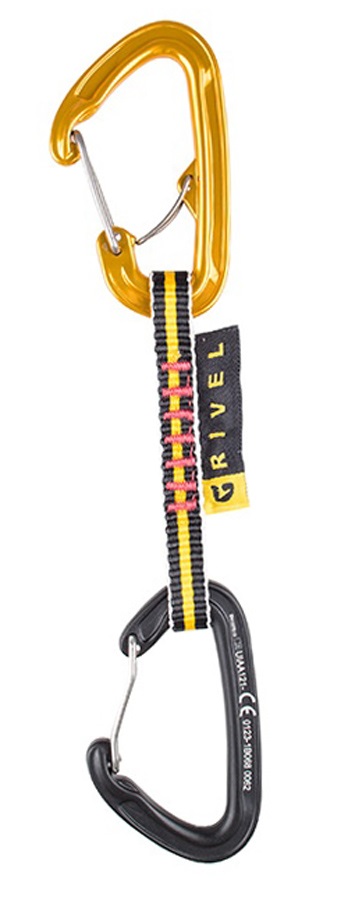
This is mainly based on personal preference and what is most comfortable for you. Especially if you have larger hands or will be wearing gloves, you may want to sacrifice some ounces for better functionality. You may think that smaller is better, but size will compromise convenience. It can never hurt to have some extra quickdraws though. Any major distance further than that you’ll want to consider having 24. If the route is around 35 meters then 18 is a good number. The length and location of your climb will determine how many quickdraws you’ll need. It will cost a little more, but it’s worth the investment. It also prevents the carabiner from getting snagged on your gear loop or other slings. It holds the gate close to the nose, which is a major safety feature because a closed carabiner can retain about three times the strength of an open one. These have a smooth notch where the nose and gate interact. These are also a better choice for winter climbing because they’re better at shedding ice and snow. Wiregate carabiners are lighter and less prone to gate flutter, but because of the notch on the nose it is possible for ropes to get caught when you’re unclipping. They’re also usually heavier and less expensive. Solid gate carabiners are ideal for sport climbing because many of them have the keylock feature so there’s no notch for your rope to get caught on. This is how carabiners latch when the gate closes. Whatever you’re clipping the quickdraw to (rope, bolt hanger, harness, etc.), a bent-gate acts as a guide to that item. These tend to be less expensive, but they’re not as easy to clip.īent-gates make clipping a rope very simple so they’re only on the rope ends of quickdraws. These are very simple to use because of the solid, straight gates. Just like the name says, straight-gates are straight from the end to the pivot point. Some will work better for you than others depending on your climbing style. Gates on carabiners come in all shapes and sizes. These quickdraws tend to be larger and beefier, and they make clipping and grabbing easier and more efficient. They’re likely wire gate because they’re light and less likely to gather ice. These quickdraws will be more lightweight. They usually fall in the mid-weight and mid-length range and work for all-around handling. These quickdraws are the happy medium between alpine and sport. The type of climbing you do will have a big impact on the type of quickdraw that will work best for you. What to Look for in a Good Climbing Quickdrawīecause there are so many different aspects that go into purchasing a quickdraw, we figured it would be helpful to list them here so you have a good idea of what to look for before you hit the buy button. Click on the name to read reviews and check prices.


Comparison Table of the Best Climbing Quickdrawsīelow is a list of the best rock climbing quickdraws. To complete your climbing gear kit, make sure to also check out our articles on the best climbing helmets, ropes, shoes, and harnesses. This guide will help you narrow down your choices and find the best quickdraw for your climbing style. However, with so many different quickdraws available it can be difficult figuring which one to get. Using these correctly allows for more fluid climbing and an increased sense of safety. While there are many pieces of climbing equipment necessary for successful climbs, few things put climbers at ease quicker than a quality quickdraw.


 0 kommentar(er)
0 kommentar(er)
